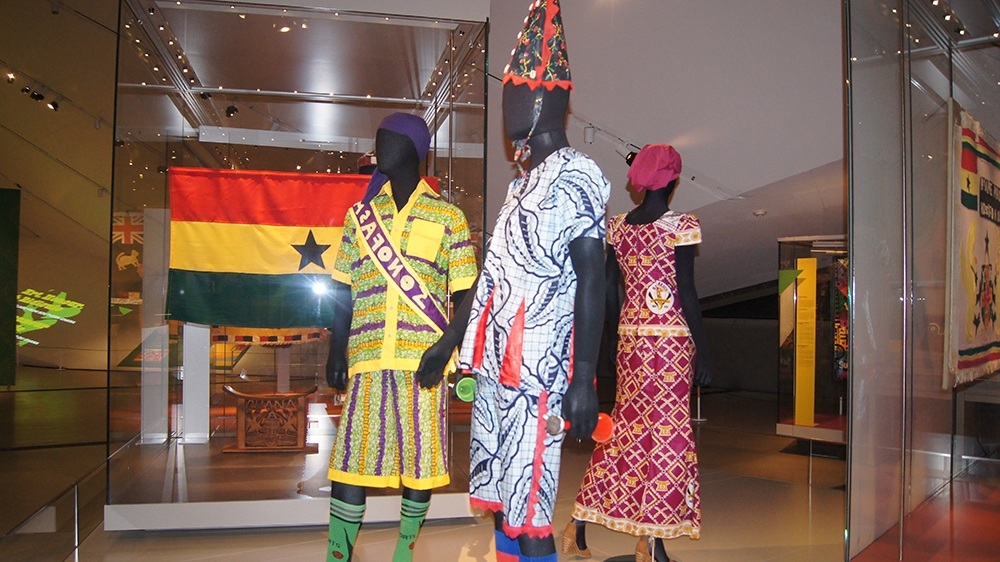Bernice Afriyie | Arts Editor
Featured image: Ceremonial garments worn by men in Ghana. | Bernice Afriyie
When immigrants leave their countries, they desperately pack with them parts of their homeland so as not to lose their customs and traditions. Physical trinkets and diaspora communities resemble their homelands, but some people, including Salman Rushdie and Vijay Mishra, would argue that there is little merit in such reproductions. The homeland exists in an immigrant’s mind, and as such is as tangible as their thoughts.
All this isn’t to say that people should not bother with maintaining their culture and way of life once they leave their native lands. As the ROM’s Art, Honour, and Ridicule: Asafo Flags from Southern Ghana exhibit demonstrates, one can never completely transfer a complete way of life into a new land, but it’s the effort and struggle to do so—the product of such labour—that is important.
Art, Honour, and Ridicule: Asafo Flags from Southern Ghana presents artifacts, flags, ceremonial headgear and musical instruments relating to the performative arts of the Fanta militias. The exhibition is co-curated by Silvia Forni, ROM curator of African Arts and Culture, and Doran H. Ross, former director of the UCLA Fowler Museum of Cultural History. The Asafo flags found in this exhibit represent the creativity, colonial history and trade of Southern Ghana. Many of the motifs found on the flag are recurring, such as wild animals, union jacks and the Ghanaian flag itself.
To mark the exhibition’s opening on September 3, a series of speakers are scheduled for appearances, including Ghana’s High Commissioner to Canada Sulley Gariba. Gariba spoke of the exhibition’s important homage to the Asafo tribes of Southern Ghana, but also to its relevance to Ghana’s diaspora community in Toronto.
Many Ghanaian-Canadians born to immigrant parents do not have access to such relics or knowledge of their history. The collection of artifacts offers them a point of entrance into their country. Though it may not be possible to replicate Ghana in its entirety for children of its diaspora, or communicate the entirety of its culture through the brevity of an exhibit, that isn’t to say we should not try. Every act of remembrance and homage, through the handmade slippers, commemorative T-shirts or vibrant Asafo flags, ensures that a country’s way of life is not lost in translation.


